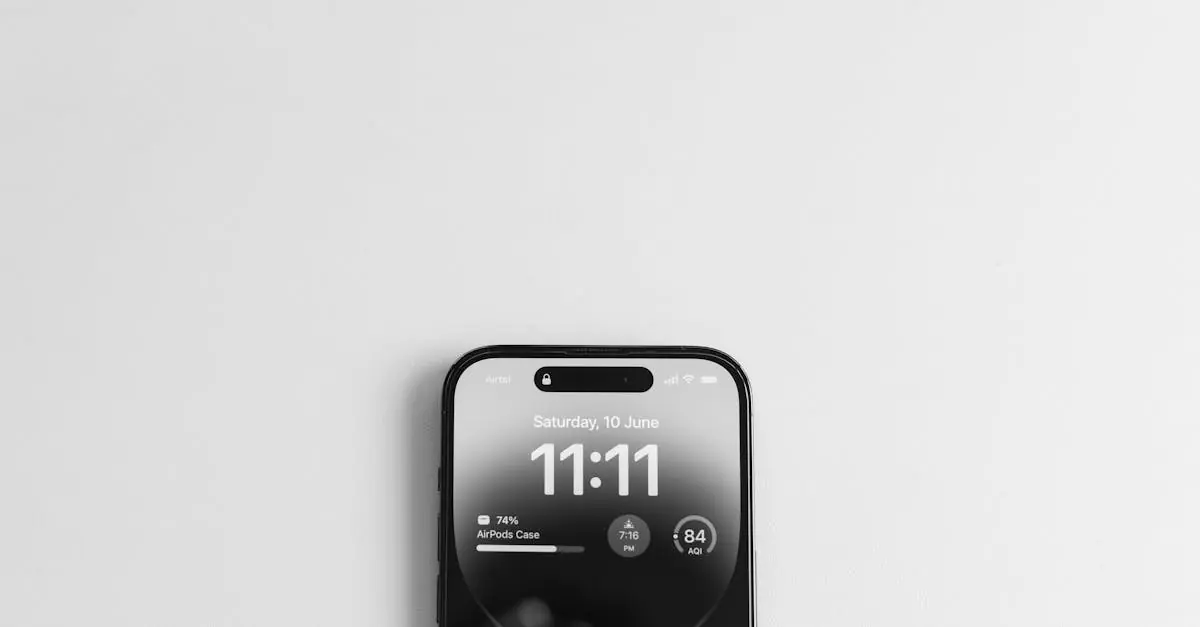In a world where everyone seems glued to their screens, it’s no surprise that mobile apps have become the lifeblood of daily life. From productivity boosters to entertainment powerhouses, the right app can turn a mundane moment into a mini-adventure. Think of them as the Swiss Army knives of the digital age—always ready to tackle whatever challenge comes their way, whether it’s finding the best pizza or tracking those pesky fitness goals.
Table of Contents
ToggleOverview of Top 100 Mobile Apps
Mobile apps streamline various aspects of daily life, catering to entertainment, communication, productivity, and health. A significant number of users rely on applications for shopping and socializing. Installed on billions of devices, these tools shape how people interact with technology.
Categories in the mobile app ecosystem include finance, lifestyle, education, and gaming. Within each category, leading apps offer unique functionalities that attract millions of users. For instance, social media apps foster connection, while photo editing tools enhance creativity.
Data shows that over 90% of mobile users engage with applications daily. This consistent usage highlights their significance in enhancing convenience. In fact, many individuals cannot imagine daily routines without them.
Apart from common categories, niche apps target specific user needs, enriching the overall landscape. Travel apps assist in planning trips efficiently, while health apps track fitness metrics accurately. These specialized applications cater to particular interests, bolstering user engagement.
Regular updates ensure that top mobile apps stay relevant and valuable. Recent trends illustrate a transition towards apps that incorporate AI and machine learning features. Consequently, these advancements improve functionality and user experience.
Key players in the app market continuously innovate to capture user attention. Companies invest heavily in user experience (UX) and user interface (UI) development. This strategic focus leads to higher downloads and improved customer satisfaction.
Overall, the top 100 mobile apps exemplify a diverse range of functionalities, each serving specific purposes. By addressing various needs, these applications enhance daily experiences and create lasting impact.
Categories of Mobile Apps
Mobile apps serve a variety of purposes and cater to different user needs. Below are key categories that highlight the versatility of these applications.
Social Media Apps
Social media apps connect millions of users across the globe. Platforms like Facebook, Instagram, and TikTok dominate this space, enabling users to share updates, photos, and videos. Engagement with these apps fuels community building and information sharing. Data reveals that over 80% of young adults regularly use social media, reflecting its significant role in daily life. Users prioritize instant communication and networking through these channels.
Productivity Apps
Productivity apps enhance time management and workflow efficiency. Notable examples include Trello, Evernote, and Google Drive, which streamline task organization and collaboration. Users often search for tools that facilitate project tracking and document sharing. Research indicates that productivity apps can boost individual performance by up to 30%. Daily engagement with these apps transforms work habits and simplifies complex tasks.
Entertainment Apps
Entertainment apps offer endless options for leisure activities. Popular choices like Netflix, Spotify, and YouTube provide users with access to a wealth of content, including movies, music, and podcasts. Users frequently turn to these platforms for relaxation and recreation. Statistics show that approximately 70% of mobile users consume entertainment content daily. This category helps individuals unwind and explore new interests.
Health and Fitness Apps
Health and fitness apps support users in achieving wellness goals. Leading applications such as MyFitnessPal, Fitbit, and Headspace track fitness activities, monitor diets, and promote mental health. Users engage with these tools to foster healthier lifestyles and maintain accountability. Reports suggest that users of fitness apps improve their activity levels by an average of 20%. Through personalized features, these apps cater to individual health needs.
Education Apps
Education apps facilitate learning and skill enhancement. Key apps like Duolingo, Khan Academy, and Coursera allow users to access diverse educational resources. Increased interest in online learning options drives engagement with these platforms. Studies reveal that users who utilize education apps often demonstrate improved retention of knowledge. This category empowers individuals to pursue personal and professional development at their convenience.
Features of Top Mobile Apps
Top mobile apps share common features that enhance user experience, making everyday tasks easier and more enjoyable. These features focus on interface design, functionality, and user feedback.
User Interface Design
User interface (UI) design acts as the first interaction point for users. Clean layouts attract attention and encourage exploration. Intuitive navigation helps users find what they seek quickly without confusion. Responsive design adapts to various screen sizes, ensuring consistency across devices. Engaging visuals, such as icons and color schemes, enhance aesthetic appeal, which improves overall satisfaction. Accessibility options, such as text resizing and voice commands, extend usability to a wider audience.
Functionality and Performance
Functionality defines the core value of an app. Apps must perform efficiently to meet user expectations. Fast loading times keep users engaged and minimize frustration. Reliable performance ensures that features operate correctly without errors or crashes. Integration with other services, such as social media or payment platforms, adds convenience for users. Continuous updates improve functionality by adding new features and fixing bugs. Successful apps focus on creating seamless experiences that meet diverse user needs.
User Reviews and Ratings
User reviews and ratings provide critical insights into app performance. Feedback from users shapes perceptions and influences download decisions. High ratings indicate satisfaction, while negative reviews highlight areas needing improvement. Developers often prioritize addressing concerns noted by users to enhance the app experience. Monitoring app store rankings allows developers to gauge overall success against competitors. Engaging with user feedback fosters community and establishes a strong relationship between developers and users.
Trends in Mobile App Development
Mobile app development undergoes constant evolution, influenced by technological advancements and user demands. Developers track emerging technologies to enhance app capabilities and improve user experiences.
Emerging Technologies
Artificial intelligence (AI) integration dominates the mobile app landscape. AI enhances user engagement through personalized recommendations and predictive suggestions. Internet of Things (IoT) connectivity allows apps to communicate with various devices, creating seamless user environments. Augmented reality (AR) and virtual reality (VR) applications deliver immersive experiences, particularly in gaming and retail sectors. As 5G technology rolls out, apps will leverage increased speeds and lower latency, enabling richer features and real-time data processing.
User Preferences
User preferences evolve alongside technological advancements. Simplicity remains a priority; apps with clean interfaces gain a higher share of satisfied users. Customization options resonate with audiences, allowing personalization according to individual needs. Privacy and security concerns shape user choices, leading to higher demand for transparency in data handling. Additionally, social media integration is critical for enhancing app connectivity and engagement. Engaging content formats like short videos or live streaming attract user attention, influencing the popularity of countless applications.
Mobile apps have undeniably transformed the way people navigate their daily lives. With their diverse functionalities they cater to a wide range of needs from productivity to entertainment. As technology continues to evolve the app landscape will adapt to meet changing user expectations and preferences.
The top 100 mobile apps not only enhance convenience but also enrich user experiences. By focusing on user interface design and performance developers ensure these apps remain relevant and engaging. As trends like AI and 5G reshape the digital environment the future of mobile applications looks promising. Whether for socializing learning or managing health the right app can significantly elevate everyday moments.






